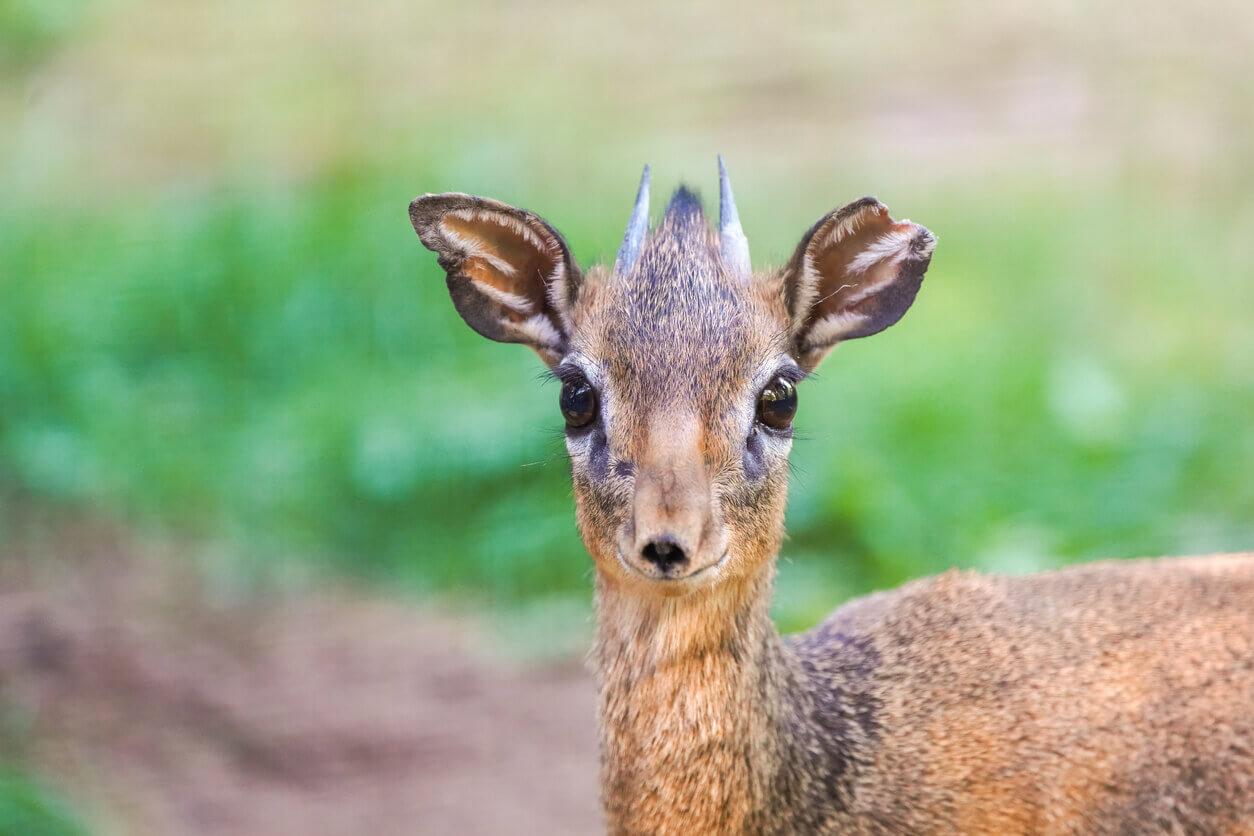

If you are looking at targeting a small antelope while hunting in Africa, Kirk’s dik-dik is an option. These antelopes are found in Southern and East Africa. The tiny game hunting trophies have a status of “least concern” as confirmed by the IUCN.
Kirk’s dik-diks prefer habitats with plenty of cover in which they can shelter and hide from predators. Their ideal habitat includes plenty of shade as well as areas where they can hide from predators yet be able to see out of the grass areas without any shrubs or vegetation to obstruct their view. Habitats with thick shrubs and short grasses are ideal. Their territories are marked with dung.
The Kirk’s dik-dik lives in pairs. Births of one offspring have been recorded during November and December, as well as April and May. With a gestation period of 5-6 months, two offspring can be born per year. The offspring is usually hidden with the mother and concealed for the first 2-3 weeks of its life.
Kirk’s dik-dik, should they find a territory that meets their needs, may keep the same territory for life. Being herbivores, its diet consists of shoots, berries, leaves, and fruits. They are water-independent and rely on the local vegetation for water.
Man hunting in Africa on a hunting adventure is not the only predator of this tiny antelope. Other predators include large birds of prey, wild dogs, lions, pythons, hyenas, jackals, and African wild dogs.
Name:
Madoqua Kirkii
Male Weight:
6-13 pounds
Male Shoulder Height:
12-16 inches
Range:
Southern & East Africa
Gestation Period:
5-6 months
Life span:
5-10 years
The Kirk’s Dik-Dik are expertly skilled in camouflage
When on African hunts targeting Kirk’s dik-dik, look for a small antelope about 20-26 inches in length, with yellowish-gray fur and a lighter underbelly. The neck is paler in comparison to the shoulders and flanks. They have a long snout and large eyes that are rimmed in white fur. Only rams have horns, that are ringed at the base. The horns are often hidden in the little hair on the forehead.
This dainty, nocturnal antelope is best hunted in the early mornings, using the walk-and-stalk method. Be prepared for a good challenge, as they are experts in the art of camouflage.
A huge challenge for African hunts targeting Kirk’s dik-dik is their ability to camouflage themselves or hide in the undergrowth, providing a great safari hunting adventure in tracking this elusive, dainty antelope. As mentioned, they often keep the same territories for their entire lives, ensuring that they know exactly where the best spots are to hide from predators. Remember, they do live in pairs, so should you miss one antelope, keep a lookout for its mate.
When on African hunts targeting Kirk’s dik-dik, a .222 or a .243 with good optics is a well-suited caliber option. 7mm’s, .270, and .30 caliber rifles are just way too much gun on these small antelopes and most certainly will ruin your safari hunting trophy.
Search from our range of Hunts across various popular destinations in Africa.
Find A Hunt